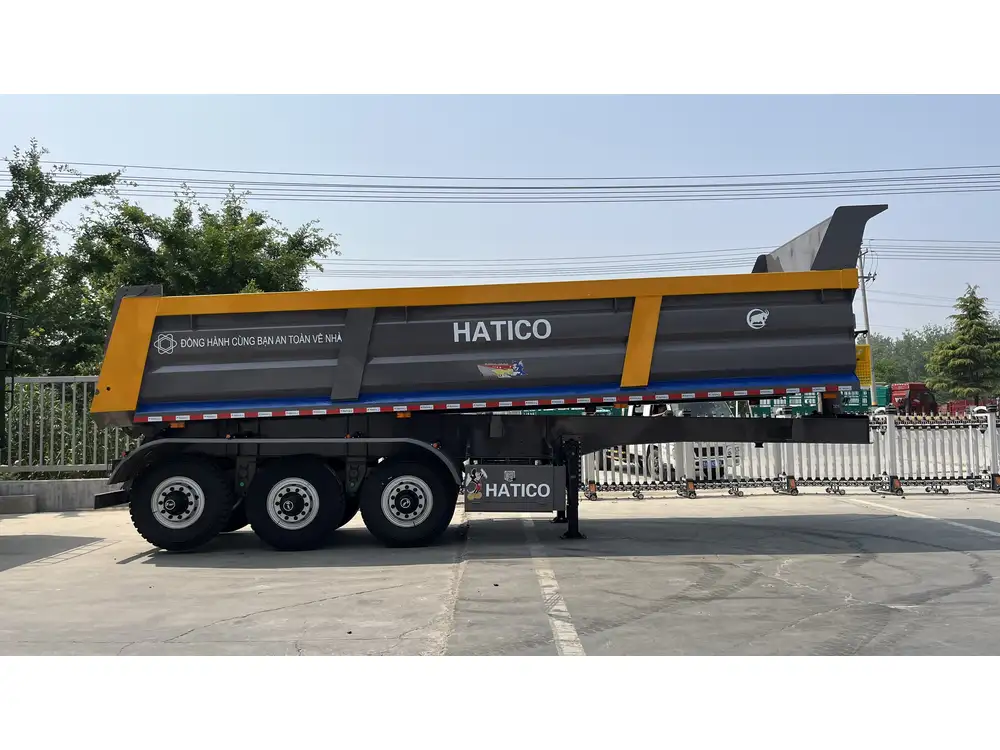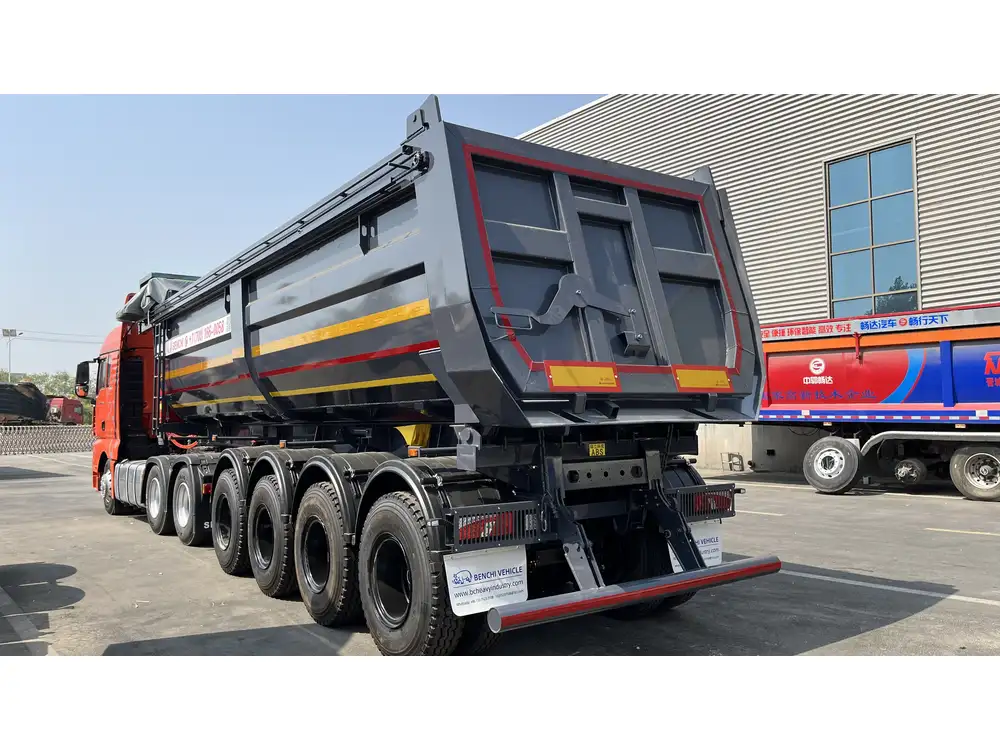When engaging in the world of logistics and transportation, one of the most critical aspects to be aware of is the dimensional specifications of semi-trailers. Among these, the 53 ft trailer stands out as a common choice due to its capacity and versatility. However, one might wonder: How tall is a 53 ft trailer? Understanding the height of these trailers is paramount, as it impacts everything from legal compliance to operational efficiency.
Standard Height of a 53 ft Trailer
The typical height of a 53 ft semi-trailer is approximately 13 feet 6 inches (or 162 inches). This measurement is significant because it is the maximum legal height permitted for commercial vehicles in most states within the United States. Beyond this height, a trailer may be subject to fines, detours, and even hazardous mobility limitations.
Importance of Staying Within Height Limits
Staying within specific height limits is not just a matter of regulatory compliance; it plays a crucial role in operational safety and efficiency. Exceeding height restrictions can lead to:
Increased Risk of Accidents: Taller trailers may encounter overpasses, bridges, or other structures, risking collisions that can cause significant damage to the vehicle and surrounding infrastructure.
Legal Penalties: Operating beyond prescribed height limits can result in hefty fines and potential downtimes necessary for legal compliance.
Increased Insurance Costs: Insurance providers may raise premiums for companies operating oversized vehicles due to the increased risk profile.

Variations in Height Among Different Trailers
The 53 ft trailer’s height, while standardized, can vary based on its design and construction. Here’s a breakdown of common variations:
| Trailer Type | Typical Height | Notes |
|---|---|---|
| Standard Dry Van | 13 ft 6 in | Most commonly used for general freight. |
| Refrigerated Trailer | 13 ft 6 in | Designed for temperature-sensitive goods, maintaining the standard height. |
| Flatbed Trailer | 5 ft to 6 ft | Lower profile can ease certain types of loading and unloading. |
| Step Deck Trailer | 11 ft to 13 ft | Low-profile design that allows for taller cargo on lower decks. |
Factors That Influence Trailer Height
Several factors can influence the height of a 53 ft trailer, including:
Trailer Type: As noted above, different trailer types are built to accommodate specific transportation needs, often affecting height.
Load Configuration: The type and height of the load being carried can also impact the overall height. Oversize loads can push a trailer beyond the legal limits.
Tire Size: The diameter of the tires can subtly affect the total height of the rig. Larger tires will increase the height marginally, which is essential to consider when planning loads.
Suspension System: The type of suspension system used can impact how much a trailer can be loaded. Air ride systems, for instance, can alter truck height in response to weight distribution.
Regulatory Compliance for Trailer Heights
Compliance is a significant concern for fleet operators, transport managers, and logistics companies. Each state may have variations in height regulations, and federal guidelines must also be adhered to. Understanding these standards ensures that your fleet operates efficiently without incurring unforeseen liabilities.
Federal Regulations: In the United States, the Federal Highway Administration (FHWA) regulates vehicle dimensions, establishing the 13 ft 6 in height limit for commercial vehicles.
State Regulations: Some states may have additional restrictions, particularly when considering specific routes or low-clearance areas. Knowing the laws in different regions is essential for long-haul trucking.

Practical Implications for Drivers and Logistics Managers
Understanding the height of your trailer is fundamental for effective logistics planning. Here are practical considerations for drivers and logistics managers:
Route Planning
Before embarking on a route, logistics managers should utilize route planning software to ensure the planned path accommodates the 53 ft trailer’s height. Features to consider:
Height Checkpoints: Identify and flag any areas likely to have low bridges, overhangs, or other potential obstacles on the designated route.
Alternative Routes: Always have alternative routes in mind to bypass any unexpected height restrictions or roadblocks.
Loading and Unloading
During loading and unloading procedures, special attention must be paid to height constraints:
Use of Equipment: Ensure that loading docks and cranes used are compatible with the height of the trailer. High-load vehicles should be aware of their stack heights.
Adjust Load Placement: Strategically place heavier or taller items within the trailer to maintain balance and stability without exceeding height limits.

Garage and Parking Considerations
Once loaded, parking a taller 53 ft trailer can pose challenges. Here are best practices:
Industrial Areas: Seek commercial parking facilities designed to accommodate taller vehicles.
Rest Stops: Verify the specifications of rest areas en route. Many commercial rest stops will specify height limits for semi-trailer parking.
Comparison with Other Trailer Sizes
When considering the height of a 53 ft trailer, it’s helpful to compare it with other common trailer sizes within the logistics and transportation industry. This comparison can allow for better insight into why the choice of trailer is crucial depending on specific needs.
| Trailer Length | Typical Height | Note |
|---|---|---|
| 28 ft | 13 ft 6 in | Common for shorter regional hauls. |
| 40 ft | 13 ft 6 in | Often seen in intermodal transport. |
| 48 ft | 13 ft 6 in | Suitable for larger regional shipments. |
| 53 ft | 13 ft 6 in | Industry standard for long-haul freight. |
What to Do if You Encounter Height Restrictions
If you find that your route contains insufficient clearance for a 53 ft trailer, consider these approaches:
Adjust Your Route: Use GPS with height restriction settings to find an alternative route.
Await Assistance: If you encounter a sudden restriction and are unsure of what to do next, halt operations and consult local authorities or other drivers.
Use of Height Allowance Permits: In some cases, operators may apply for special permits allowing them to exceed standard heights within specific localities. This process typically requires a fee and proper justification.

Conclusion: The Functional Role of a 53 ft Trailer’s Height
Understanding the height of a 53 ft trailer, crucially standing at 13 feet 6 inches, offers insights into both compliance and operational safety in the logistics sector. By ensuring adherence to height regulations, thoughtfully planning routes, and clearly organizing load configurations, companies can significantly enhance efficiency while mitigating risks.
As the transportation industry evolves, staying informed about these dimensions can have profound implications for business success and overall operational management. Ultimately, the knowledge of trailer heights, particularly for widely used 53 ft units, serves as a cornerstone for ensuring safety, legality, and operational efficiency in a fast-paced industry.



